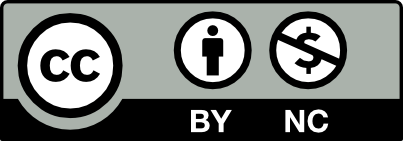PENGARUH WAKTU PERENDAMAN TiO2 DALAM LARUTAN EKSTRAK ANTOSIANIN BUNGA ROSELLA PADA KINERJA DYE SENSITIZED SOLAR CELL (DSSC)
Abstract
Keywords
Full Text:
PDFReferences
Purwanto, A., Widyandari, H., Jumari, A. 2011. Fabrication of High Performance Fluorine Doped Tin Oxidefilm Using Flame-Assisted Spray Deposition. Thin Solid Films 520 (2012) 2092–2095.
Callister, William D.2007. Materials Science and Engineering : An Introduction 7th Edition, John Wiley & Sons, Inc: New York.
A. Maddu, Makara, 2007.Teknologi, 11(2), 78-84.
T. Ariyanto. 2013.Analisis Efisiensi Dye sensitized Solar Cell (DSSC)Menggunakan Kulit Buah Naga Merah dan Kulit Buah Naga Merah, Program Studi Teknik Fisika Fakultas Teknologi Industri ITB, Bandung.
L.Vania, Investigasi Kinerja DSSC (Dye-sensitized Solar Cell) Tersensitasi Ekstrak Bluberi dan Kranberi sebagai Sumber Pemeka Antosianin, Departemen Kimia FMIPA, ITB, Bandung.
Khwanchit Wongcharee, Vissanu Meeyoo, Sumaeth Chavadej, 2007. Dye-sensitized solar cell using natural dyes extracted from rosella and blue pea flowers, Solar Energy Materials and Solar Cells, 91, 7, 566-571. http://dx.doi.org/10.1016/j.solmat.2006.11.005.
LU Okoli, JO Ozuomba, AJ Ekpunobi, PI Ekwo, 2012. Anthocyanin-dyed TiO2 electrode and its performance on dye-sensitized solar cell, Research Journal of Recent Sciences, 1, 22-27.
Adhitya, E.A, 2013, Sintesa Titanium dioxide (TiO2) untuk Dye-Sensitized Solar Cell dengan Antosianin Bunga Rosella (Hibiscus sabdariffa), Indonesian Journal of Applied Physics Vol.3 No.2 Hal. 181-187.
M. Artono, Fabrikasi Dye sensitized Solar Cell Menggunakan Natural Dye sebagai Alternatif Dye Ruthenium, Program Studi Teknik Fisika Fakultas Teknologi Industri ITB, Bandung, 2013.
Mustaqim, Fabrikasi Dye-Sensitized Solar Cell Menggunakan Fotosensitizer Ekstrak Bunga Rosela (Hibiscus sabdariffa L) dan Elektrolit Padat Berbasis PEG (Polyethylene Glycol).
Mardiah, 2010, Ekstraksi Kelopak Bunga dan Batang Ekstraksi Kelopak Bunga dan Batang Rosella (Hibiscus Sabdariffa L.) sebagai Pewarna Merah Alami (Jurusan Teknologi Pangan dan Gizi Universitas Djuanda, Bogor.
Septina, W., D Fajarisandi, M Aditia, Pembuatan Prototipe Solar Cell Murah dengan Bahan Organik-Inorganik (Dye-sensitized Solar Cell), in: Laporan Akhir Penelitian Bidang Energi, Penghargaan PT. Rekayasa Industri, 2007.
Samina Ali, JE Matthew, Biomimicry in Solar Energy Conversion with Natural Dye-Sensitized Nanocrystalline Photovoltaic Cells, Department of Chemistry and Biochemistry Obelin College, Ohio, (2007) 1-22.
Jae-Wook Lee, Kyung-June Hwang, Wang-Geun Shim, Kyung-Hee Park, Hal-Bon Gu, Kyu-Hyuk Kwun, Energetic surface heterogeneity of nanocrystalline TiO2 films for dye-sensitized solar cells, Korean Journal of Chemical Engineering, 24, 5, (2007) 847-850 10.1007/s11814-007-0052-4
Refbacks
- There are currently no refbacks.



